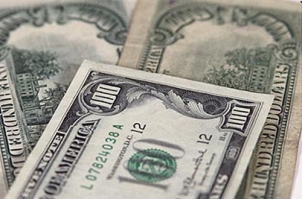
Mortgage Debt Decreases by $350 Billion Over Last 12 Months
By Liz Clinger Updated on 6/1/2012According to the Federal Reserve Bank of New York, $350 billion in mortgage debt decreases occurred over the last 12 months, by payoffs, foreclosure or other forfeiture in lieu of eviction. Consumer credit reports on mortgage balances met peak highs at around $9 trillion in 2008 and decreased to close to $8.2 trillion as of March 31, 2012.
According to the report, new mortgage originations on credit reports are increasing, while foreclosures remain subdued.
In 1Q of 2012, consumers released $81 billion in mortgage debt following a reduction of $134 billion in the 4Q of 2011 and $114 billion reduction in 3Q of 2011.
New mortgage originations in 2012’s 1Q reached $412 billion, up $8 billion from 2011’s 4Q.
Foreclosure activity for the 1Q this year shows 219,000 foreclosures on borrower reports, according to credit reporting agencies, which is about the same activity as 4Q 2011, though a 21% decrease from 1Q 2011. The 90-day delinquency transition rate to current status was the best since early 2011 from the slowing of foreclosures, before then the rate of curing a delinquent loan to current status remained below severely delinquent transitions since mid-2007.
According to the senior economist at the New York Fed, student loan debt is “the only form of consumer debt to substantially increase since the peak of household debt in late 2008.” As mortgage and credit card debt has shown declines, student loan debt is still growing, with a $30 billion dollar increase in the 1Q, reaching $904 billion on consumer credit reports since the end of last year.
Overall consumer debt decreased in the 1Q around 1% from 2011’s 4Q, reaching $11.44 trillion.

Didn't find the answer you wanted? Ask one of your own.
-
 What You Need To Know About Escrow
View More
What You Need To Know About Escrow
View More
-
 President Obama Initiates Lower FHA Mortgage Insurance Premiums
View More
President Obama Initiates Lower FHA Mortgage Insurance Premiums
View More
-
 What is Quantitative Easing?
View More
What is Quantitative Easing?
View More
-
 The 5 New Mortgage and Housing Trends for Summer 2013
View More
The 5 New Mortgage and Housing Trends for Summer 2013
View More
-
 Fannie Mae profitability skyrockets
View More
Fannie Mae profitability skyrockets
View More
-
 Foreclosure protections for more soldiers after lawmakers draft bill
View More
Foreclosure protections for more soldiers after lawmakers draft bill
View More
-
 FHFA: HARP success follows low mortgage rates, February refinance volume strong
View More
FHFA: HARP success follows low mortgage rates, February refinance volume strong
View More
-
 Use of Mortgage Interest Deduction Depends on Where You Live
View More
Use of Mortgage Interest Deduction Depends on Where You Live
View More
-
 HUD will sell 40,000 distressed loans in 2013
View More
HUD will sell 40,000 distressed loans in 2013
View More
-
 Mortgage Principal Reduction Could Save Taxpayers $2.8 Billion
View More
Mortgage Principal Reduction Could Save Taxpayers $2.8 Billion
View More
-
 Mortgage Applications Regain Traction after Sluggishness, Rates Continue to Fall
View More
Mortgage Applications Regain Traction after Sluggishness, Rates Continue to Fall
View More
-
 HARP 3.0 Discussions Reveal Little Hope for HARP Update
View More
HARP 3.0 Discussions Reveal Little Hope for HARP Update
View More
-
 Home Prices Rise in February According to LPS Data
View More
Home Prices Rise in February According to LPS Data
View More
-
 Balancing Act: House Committee Hears Opposing Viewpoints Over Mortgage Interest Rate Deduction
View More
Balancing Act: House Committee Hears Opposing Viewpoints Over Mortgage Interest Rate Deduction
View More
-
 Near Record Low Mortgage Rates Buoy Housing Recovery
View More
Near Record Low Mortgage Rates Buoy Housing Recovery
View More
Related Articles
Ask our community a question.
Searching Today's Rates...

Featured Lenders

